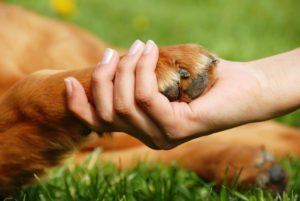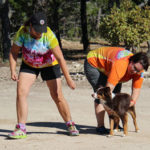Trainers would like to tell their Students
Demonstrate proper class etiquette. In addition to helping your instructor, you also set a good example for any new students that might attend. They may seem mundane reminders, but practicing these courtesies will definitely go a long way towards a more positive class experience for instructor and student alike.
This would include simple things like:
Be ready for class to begin on-time. Allow time to set up your dog so your class can start on time. Instructors and fellow classmates often have busy schedules so may not have the opportunity for class time to run over time.
Help set bars for your fellow classmates in between runs.
Keep your dog either on-leash or in a crate, until it’s your turn.
Pick up after yourself and your dog. Everyone knows to pick up their dog’s poo plus any trash before you leave.
Be ready for your turn. Time spent getting dogs in and out of a crate, pottying, warming up, can use up class time that could be better spent on training.
Pay attention to the instructor through the whole class. Talking during class when another student is working is not only rude but disruptive. You can learn something even when it’s not your turn. Plus when paying attention, you can add positive support for other classmates.
Come to class prepared and ready to learn. If your instructor told you to bring certain supplies, do that. Most dog training classes involve an instructor that is training YOU to train your dog, so be prepared and be sure to follow instructions.
Do your homework. All dog training takes a commitment from the handler. It is very important to practice what you learn. No amount of class time can make up for the work needed at home in order to produce reliable results with proper handling techniques. If your trainer feels like you aren’t taking the lessons seriously, they can become very frustrated.

Frequent rewards make for a more cooperative partner.
Contribute towards a positive atmosphere in your class. Do you just want to work your own training program using the club’s equipment? Have you considered how your behavior in class can affect everyone else? Deliberately ignoring instructions sets a bad tone for the entire class and can potentially undermine the trainer’s efforts to lead other students. Make sure your instructor and classmates understand your goals so they can better support you in that endeavor without deflating the whole class. Additionally, more experienced handlers can be a very positive source of encouragement for new handlers.
Be kind to your dog, your partner, your friend. Your dog’s only desire is to have fun with you. You can contribute to their happiness and positive attitude by rewarding them frequently. Communicate to them in the way they understand best, with their favorite toys or treats. Love your dog! It shouldn’t need to be said, but oftentimes we get so caught up in our own goals that we forget the needs of our team as a whole.
Students would like to tell their Trainers
 Start class on time. Whether it’s a private lesson or group, people have schedules and may not have the opportunity to adjust for going overtime. If you start your class late and leave early, eventually your students will feel like they aren’t getting their money’s worth. Alternately, your attention to keeping your class on schedule demonstrates an appreciation for your student’s time.
Start class on time. Whether it’s a private lesson or group, people have schedules and may not have the opportunity to adjust for going overtime. If you start your class late and leave early, eventually your students will feel like they aren’t getting their money’s worth. Alternately, your attention to keeping your class on schedule demonstrates an appreciation for your student’s time.
Prepare for your class. If you want people to consistently attend your classes, you have to provide pertinent information. If you provide what your students need, their skills will progress at a much faster rate, which in turn adds value to your class. Your lack of preparation indicates an indifferent attitude towards their goals. It will directly correspond and affect their attitude towards class. If it’s serious for you, it will more likely be serious for them.
Give your students the attention they deserve. Your attention in that moment belongs to them. Talking on the phone or texting during their class indicates to them your lack of commitment to their progress. Giving a student your full attention makes them feel valued and will affect whether they continue with the class.
Handle private business outside of class time. If you have a dog that you like to use to demonstrate a certain handling technique, by all means, do that. Visuals are great for explaining how to do something new. But please keep in mind this time was meant to train your students, not your dog. It will not be appreciated if you use the time your students paid for to train your own dog. This also goes for managing projects around your property and any other private matters that need attending.
Keep things moving. Without proper direction, classes can quickly get out of control with time eating behavior from distracted students. Oftentimes the student that’s most attentive and prepared to learn gets penalized by the student that’s not. Try to give students equal time, if possible. Obviously, this will vary by individual needs, but your students will appreciate getting equal time to work on their skills.
Be kind and uplifting to your students. No, I’m not suggestion puffery. But, just like our dogs, positive reinforcement goes much further than negative. If there is any possible way to uplift your student, you should. If they can walk away from the class feeling hopeful and positive about the work they are doing in your class, they will be encouraged to keep working. A deflated student will not want to come to class.
We are all guilty of at least one of these.
I know I am. A friendly reminder can sometimes be helpful. For the most part, agility trainers are offering classes because they want to teach better handling skills, and students are attending classes because they want to learn better handling skills. If everyone works together we can all become better teachers and students.
Wishing you a fun class time working with your dog!


